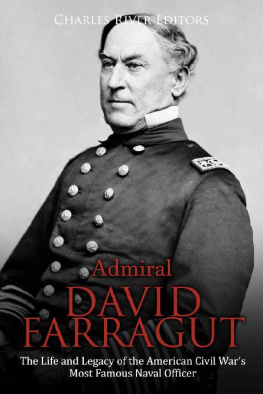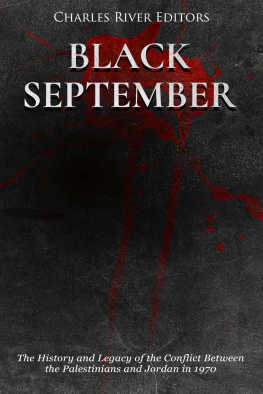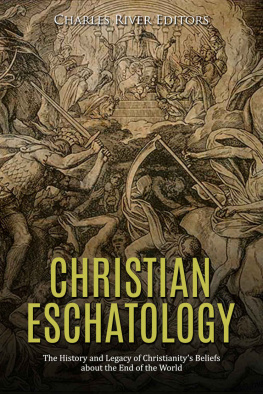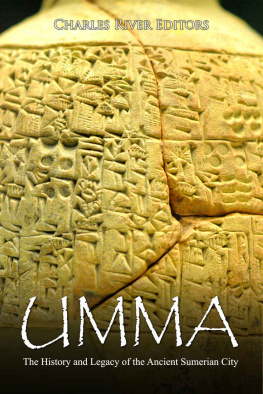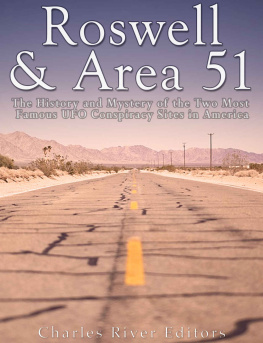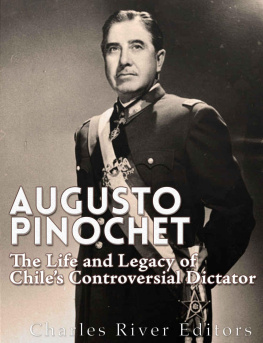Charles River Editors - The Andrews Sisters: The Lives and Legacy of the Famous Singing Trio during the Swing Era
Here you can read online Charles River Editors - The Andrews Sisters: The Lives and Legacy of the Famous Singing Trio during the Swing Era full text of the book (entire story) in english for free. Download pdf and epub, get meaning, cover and reviews about this ebook. year: 2020, publisher: Charles River Editors, genre: Detective and thriller. Description of the work, (preface) as well as reviews are available. Best literature library LitArk.com created for fans of good reading and offers a wide selection of genres:
Romance novel
Science fiction
Adventure
Detective
Science
History
Home and family
Prose
Art
Politics
Computer
Non-fiction
Religion
Business
Children
Humor
Choose a favorite category and find really read worthwhile books. Enjoy immersion in the world of imagination, feel the emotions of the characters or learn something new for yourself, make an fascinating discovery.
- Book:The Andrews Sisters: The Lives and Legacy of the Famous Singing Trio during the Swing Era
- Author:
- Publisher:Charles River Editors
- Genre:
- Year:2020
- Rating:5 / 5
- Favourites:Add to favourites
- Your mark:
- 100
- 1
- 2
- 3
- 4
- 5
The Andrews Sisters: The Lives and Legacy of the Famous Singing Trio during the Swing Era: summary, description and annotation
We offer to read an annotation, description, summary or preface (depends on what the author of the book "The Andrews Sisters: The Lives and Legacy of the Famous Singing Trio during the Swing Era" wrote himself). If you haven't found the necessary information about the book — write in the comments, we will try to find it.
The Andrews Sisters: The Lives and Legacy of the Famous Singing Trio during the Swing Era — read online for free the complete book (whole text) full work
Below is the text of the book, divided by pages. System saving the place of the last page read, allows you to conveniently read the book "The Andrews Sisters: The Lives and Legacy of the Famous Singing Trio during the Swing Era" online for free, without having to search again every time where you left off. Put a bookmark, and you can go to the page where you finished reading at any time.
Font size:
Interval:
Bookmark:
By Charles River Editors

The Andrews Sisters in 1952

Charles River Editors provides superior editing and original writing services across the digital publishing industry, with the expertise to create digital content for publishers across a vast range of subject matter. In addition to providing original digital content for third party publishers, we also republish civilizations greatest literary works, bringing them to new generations of readers via ebooks.
Sign up here to receive updates about free books as we publish them , and visit Our Kindle Author Page to browse todays free promotions and our most recently published Kindle titles.

The Andrews Sisters in 1952
I wanted to become an Andrews sister. My wish was that they could become a quartet and Id be the fourth singer. - June Allyson, actress
The vaudeville era of the early 20 th century dominated American entertainment with an endless array of specialty acts. Thousands of performers emerged from familiar American lives to test their novel talents with a voracious public in search of the next fad. Violin concertos were played on bicycle pumps, and contortionists defied gravity and the limits of human anatomy. Animal acts of every variety sought to up the ante in bringing the exotic to the American stage. One thread held most of these oddities together. Whatever the talent, it was virtually obligatory in most cases that both humans and animals incorporate singing and dancing into the act. This was particularly true for women regardless of the talent level or genre of specialty.
Acts based on family groups became increasingly common, and the genre of sister acts caught fire in the 1920s. Many of these female sibling groups emerged from Midwestern farms and small towns outside the large cities, a phenomenon that is still in play as young women from the American heartland arrive in Las Vegas and Los Angeles on an annual basis to search for stardom. However, in the vaudeville era, the exotic and the odd were often prized above quality, and in the words of author Colleen Cowie, many performing girls were just pretty young things of negligible qualifications at best. The appetite for simple beauty and acts based on mindless themes extended to men as well and typified the sort of entertainment a family member might devise for shows in a typical American living room. Other sister groups may have possessed talent for their chosen genre, but they were dubious in the singing and dancing department. Some attained a successful career based on their lack of quality, such as the Cherry Sisters of Iowa whose concerts and literary offerings were met with hurled vegetables for over a decade. The Ross Sisters were extraordinary contortionists, but even the truly novel began to tire the sated audience by the following decade. Such a craving for this generally cheerful mass-produced home entertainment was in part a feature of the First World War and its aftermath. A fatigued public sought emotional rescue from international violence, money woes, and anxiety-ridden political standoffs. In many cases, the more banal and childlike the act, the more such a course of therapy was served. National acts arrived through a system of local halls and chain theaters such as those of the Pantages or Orpheum organizations. As a rule, appearances occupied a brief period in an evening performance, mixed in with a dozen or more fellow performers.
Nevertheless, one female singing group, a hometown trio from Minnesota, stepped into the waning years of sister acts with a quality that at least in their case revived a national interest in the genre. The public psychology that opened the door to the Andrews Sisters has been analyzed extensively through the decades, and their extraordinary success likely originated from multiple fascinations. Gary Giddins, noted biographer of Bing Crosby, is particularly qualified to venture his theory. Crosby worked extensively with the trio from the small town of Mound in the east central portion of the state. Giddins asserts that Patty, LaVerne, and Maxene Andrews created their unique sound in part through the development of a very bright harmonic sense, first achieved by the older sister, LaVerne. The trio mastered a virtuosic use of close, intricate harmonies, coupled with a precise and a seemingly telepathic rhythmic sense that could be honed for performance in a short period of rehearsal time. These qualities were enveloped in a timbral sheen reminiscent of multiple trumpets. At the root of it, the trio represented one of many thousands of families in which the children attempted to imitate the reigning stars. In this rare case, they did it better than anyone.
While building on the genre of boogie-woogie, generally a feature of the African American music scene, the home-grown trio tapped into the grief of the First World War, then rode the ensuing wave of nostalgia that typified WWII. They filled a wartime and post-war need for emotional restoration in the same way vaudeville had served in 1918. Establishing a national boogie-woogie fad as an alternative to the typical 4/4 swing of white society, the sisters coupled the repertoire with an inherent quality of optimism and celebrative Americanism. Unlike most fellow performers, they eschewed the endless theme of brooding romantic love and instead exhorted a country at war to raise its collective morale through a rare demonstration of musical zest.
As radio personalities, the Andrews Sisters became ubiquitous and iconic for a public that had clung to the apparatus through every manner of national catastrophe. Radio networks were operative throughout the day and night, but generally offered a diet of round-the-clock news, much of it grim. Eventually, the trio came to break the onslaught of national and international events with six to eight appearances each day. In these breaks, war-weary Americans were treated to snappy rhythms clothed in an overt musical patriotism to spur them on. In financial terms, the three sisters broke every record ever set by a female singing group, eventually rivaling Elvis Presley and The Beatles as commercial juggernauts. While Uncle Sam was recruiting troops destined for the European continent and Asia, teenagers were home doing the jitterbug. The Andrews Sisters, overthrowing the worn out and vacuous personality of the vaudeville model, took the step and rode it to fame and national adoration, adapting to current styles along the way.
The Andrews Sisters: The Lives and Legacy of the Famous Singing Trio during the Swing Era chronicles how the three sisters formed one of the most famous groups in music history. Along with pictures of important people, places, and events, you will learn about the Andrews Sisters like never before.
The wonderful thing was that we were together for so many years. We dressed together, we slept together, we roomed together, we went shopping together, and of course we rehearsed together. We never separated. Maxene Andrews
The youngest of the Andrews Sisters was Patricia Marie, known to the world as Patty, described by one biographer as a loud and energetic blond with the gift of confident vocals. When solos were required, Patty took over as the lead singer in an otherwise equal arrangement. Born on February 16, 1918 in the final year of World War I, she reached her prime artistic condition at precisely the right moment for an extensive career on behalf of the troops in the Second World War.
Font size:
Interval:
Bookmark:
Similar books «The Andrews Sisters: The Lives and Legacy of the Famous Singing Trio during the Swing Era»
Look at similar books to The Andrews Sisters: The Lives and Legacy of the Famous Singing Trio during the Swing Era. We have selected literature similar in name and meaning in the hope of providing readers with more options to find new, interesting, not yet read works.
Discussion, reviews of the book The Andrews Sisters: The Lives and Legacy of the Famous Singing Trio during the Swing Era and just readers' own opinions. Leave your comments, write what you think about the work, its meaning or the main characters. Specify what exactly you liked and what you didn't like, and why you think so.







